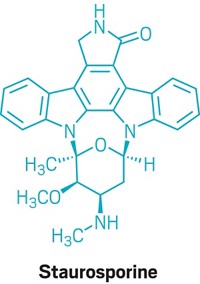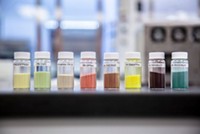Advertisement
Grab your lab coat. Let's get started
Welcome!
Welcome!
Create an account below to get 6 C&EN articles per month, receive newsletters and more - all free.
It seems this is your first time logging in online. Please enter the following information to continue.
As an ACS member you automatically get access to this site. All we need is few more details to create your reading experience.
Not you? Sign in with a different account.
Not you? Sign in with a different account.
ERROR 1
ERROR 1
ERROR 2
ERROR 2
ERROR 2
ERROR 2
ERROR 2
Password and Confirm password must match.
If you have an ACS member number, please enter it here so we can link this account to your membership. (optional)
ERROR 2
ACS values your privacy. By submitting your information, you are gaining access to C&EN and subscribing to our weekly newsletter. We use the information you provide to make your reading experience better, and we will never sell your data to third party members.
Synthesis
Arrays Aid Scale-Up Of Drug-Candidate Syntheses
Drug Discovery: Researchers optimize syntheses by adapting coupling reactions in array format
by Stu Borman
November 21, 2014
| A version of this story appeared in
Volume 92, Issue 47

Coupling reactions are often used to make complex small-molecule drug candidates. But they can be difficult to carry out when starting materials are available in only tiny quantities, as is often the case in natural product synthesis and early stages of drug discovery. Finding the best conditions to scale up syntheses can also be challenging.
Now, researchers have devised an approach that makes it easier to vary reaction conditions and optimize scale-up: running arrays of multiple palladium-catalyzed coupling reactions with small amounts of starting materials. It was developed by chemists Spencer D. Dreher and Tim Cernak, postdocs Alexander Buitrago Santanilla and Erik L. Regalado, and coworkers at Merck Research Laboratories (Science 2014, DOI: 10.1126/science.1259203).
The approach makes it possible to run arrays of Pd-catalyzed C–N, C–O, and C–C coupling reactions on a nanomolar scale with as little as 20 µg of starting materials. The Merck researchers run reaction variations with different catalyst ligands and base reagents and analyze products using liquid chromatography/mass spectrometry. The technique enables them to identify efficient reaction conditions for scale-up.
Adapting these coupling reactions for use in high-throughput arrays was no easy feat. For example, low-boiling-point solvents typically used in coupling reactions are unsuitable for use in small-volume array reactions because they evaporate too quickly. So the Merck researchers run their reactions in a polar, high-boiling-point solvent, dimethylsulfoxide, and use electron-rich ligands to protect the Pd catalyst from DMSO, with which it is normally incompatible. The strong bases generally used in coupling reactions are also incompatible with polar solvents, so the researchers instead use soluble organic “superbases” to activate the reactions in DMSO. The superbases allow the reactions to run at room temperature, providing mild reaction conditions and minimizing solvent loss. And the soluble conditions allow reaction mixtures to be handled by nanoliter liquid-handling robotics for enhanced automation.
The Merck group used the approach to optimize the microgram-scale C–N coupling of a complex aryl halide with an amine to give an arylamine, and then scaled up the reaction to gram level.
“This paper is an eye-popping example of doing chemical synthesis and analysis in a new way—literally orders of magnitude differently than has been done previously,” comments John F. Hartwig of the University of California, Berkeley, an expert in metal-catalyzed coupling reactions. “I never would have thought 20 years ago that C–N coupling could be done on these types of molecules, let alone on the nanomole scale of this work.”
The approach “is potentially transformative, given the extent to which mass limitations have impeded the full deployment of high-throughput experimentation in many contexts, from pharma to academia,” adds University of Ottawa transition-metal catalysis specialist Deryn E. Fogg.





Join the conversation
Contact the reporter
Submit a Letter to the Editor for publication
Engage with us on Twitter